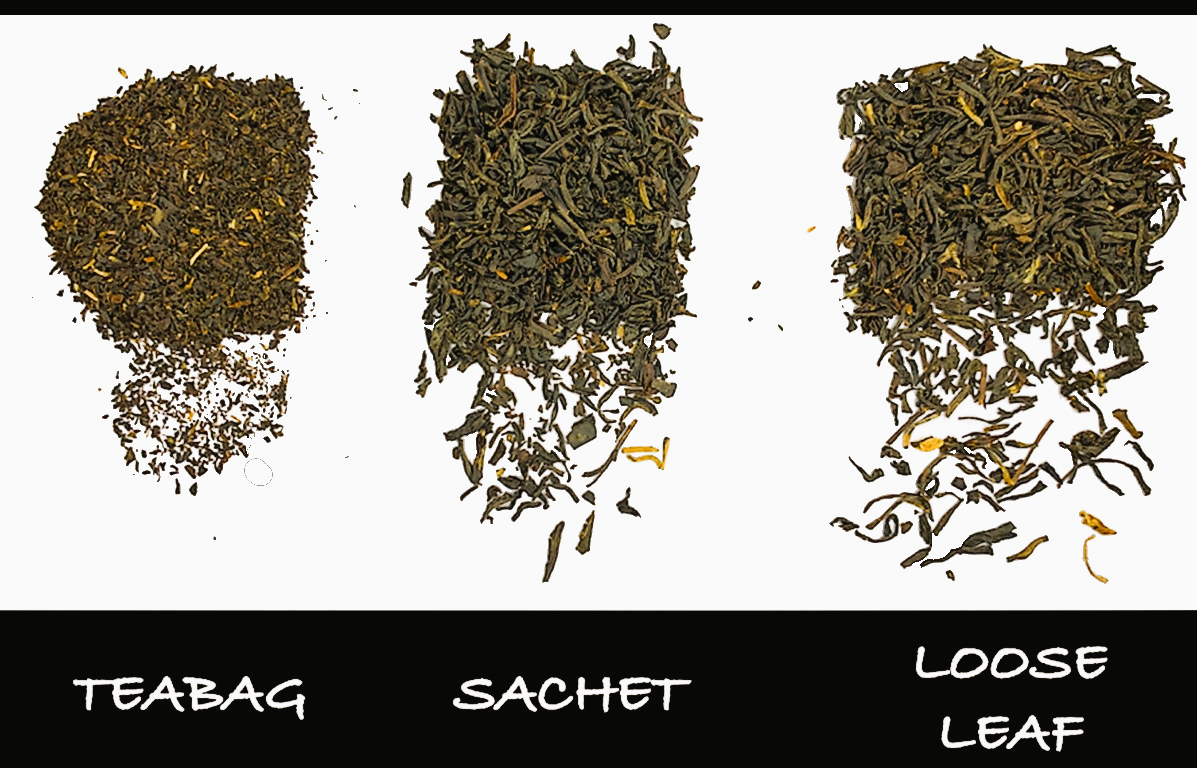Editor’s note: This excerpt is from the book, Nerd’s Tea Lab by Virginia Utermohlen Lovelace, MD

Important Note About Teabag Teas, p 15
Tea for teabags is prepared in two ways. In one way, leaf fragments are collected when teas for sachets and loose-leaf teas are made as leftovers. The tea leaves are more often processed specifically for teabags, using the cut, tear, and crush (CTC) method. As the name suggests, this method cuts the leaves into tiny pieces while they are being processed by oxidation and heating.
There are five basic reasons for creating teabag tea using the CTC method.
The first four reasons are economical: the method makes use of lower-grade leaves, especially leaves lower down on the twig that provide less complex flavors; it can be completely automated; it makes use of the entire leaf, including the smallest pieces; and the bagged tea can be packed tightly for shipping, so shipping costs are lower.
The fifth reason has to do with brewing. When you brew a loose-leaf tea, the leaf absorbs water and expands. When the leaf expands, it releases flavor chemicals into the water. If the leaf can’t expand, it can’t release these flavor chemicals easily. The standard teabag doesn’t have sufficient room to allow the leaf to expand, so a loose-leaf tea brewed from a bag will be weak. By contrast, the tiny pieces left in a tea bag can be fully exposed to water, so extraction is rapid, and you can get a strong brew.
Very important to note: a great deal of care goes into creating a teabag tea. The tea’s flavors must be consistent from batch to batch and year to year. This consistency has to be maintained despite the fact that leaf harvests differ considerably from each other. Tasters create this consistency by blending teas from multiple sources and tasting the blends against previous batches, a process that requires great skill.
Teabags, sachets, or loose-leaf tea?
When you buy tea for yourself, one of the first questions that might come to mind is: should I get the tea in a bag, in a sachet, or as a loose leaf?
Bags are easy to deal with; sachets are also easy but somehow fancier and certainly more expensive; and loose leaf is even more expensive, and it is often much more complicated to brew. And then, of course, there’s ready-to-drink, which is another discussion.
As a nerd, I decided to look into the issue by buying the same tea as teabag, sachet, and loose leaf, to see the differences.
I chose an English Breakfast Tea for this experiment, partly because I like it but mainly because I could get the same tea in all three forms. Presumably, then, they will all taste the same when brewed.
(Spoiler alert: they don’t!)
Nerd’s Tea Lab Video by Virginia Utermohlen Lovelace, MD
Tea Market
Get More Value from Your Tea: BRU Maker One
+41794574278
Jacque's Organics
(647) 804-7263
A very well researched article on a subject of interest to me. And except for her conclusion I agree almost completely with Dr. Utermohlen Lovelace. Paper teabags and lesser sachets are inferior, except possibly for convenience, than loose leaf tea, no question. When carefully made and correctly used, the newer, polylactic acid tea sachets manufactured with high quality teas or tisanes can make a cuppa that is indistinguishable from brewed loose leaf tea. I have tried the comparison a number of times.
Additionally, an advantage of the sachets, especially for tisanes and blends that contain material with different textures, sizes, or other physical properties is that with today’s tea sachet technology each bag can have the exact proportions of each ingredient that was intended. These same blends can lose their blend specificity when packed together for shipping or in storage in your home before use. In this case, the properly made and proportioned tea sachet gives the exact beverage, with the exact mixture of ingredients the manufacturer meant for you to enjoy.
Motovotano is a tea sachet manufacturer in Anacortes, WA that has explored and perfected the art of making tea sachets that have the precise mix of ingredients intended by each tea maker.
That said, I respect the care and precision Dr. Lovelace brings to the matter.